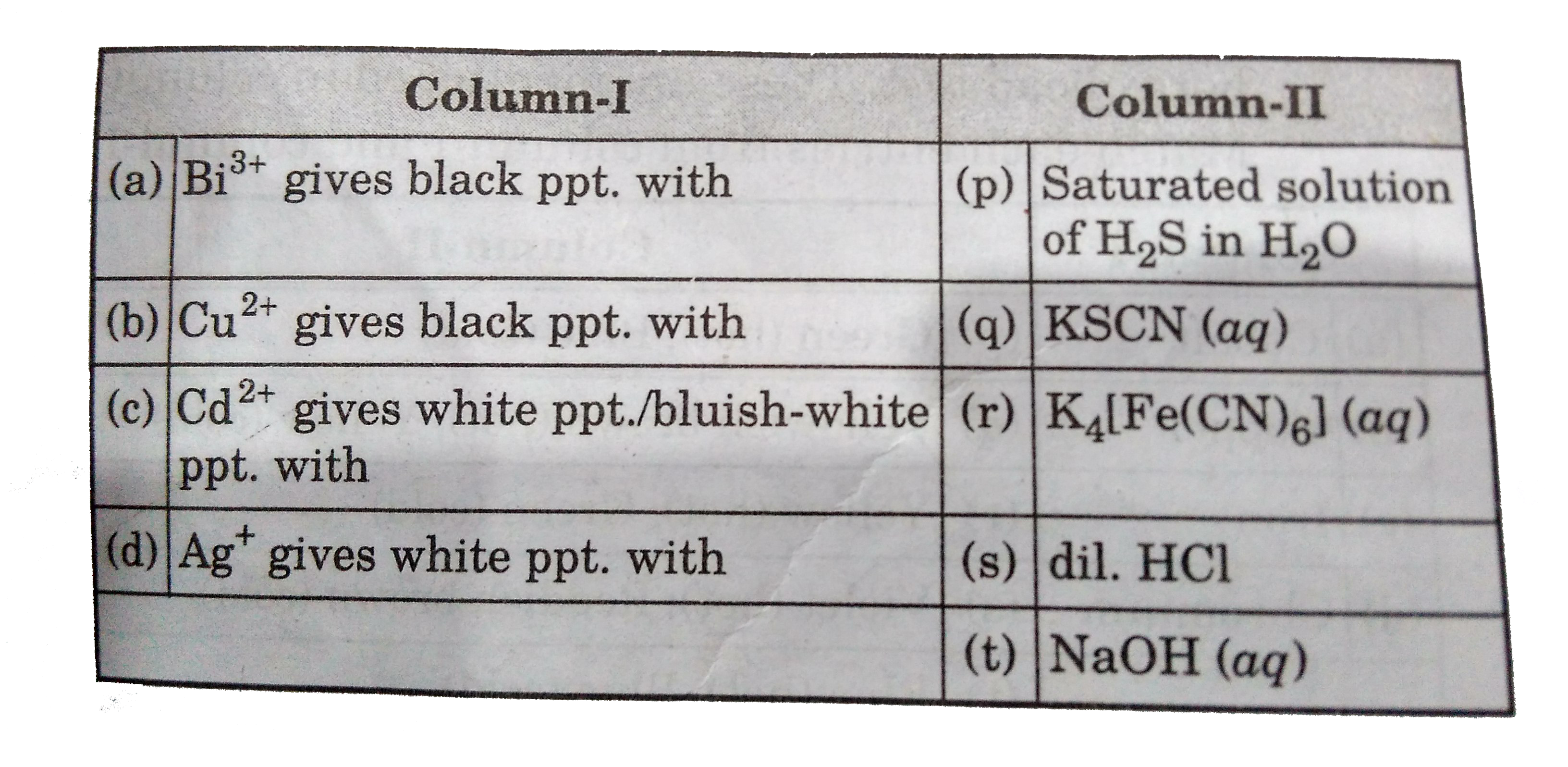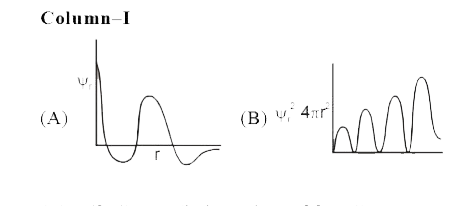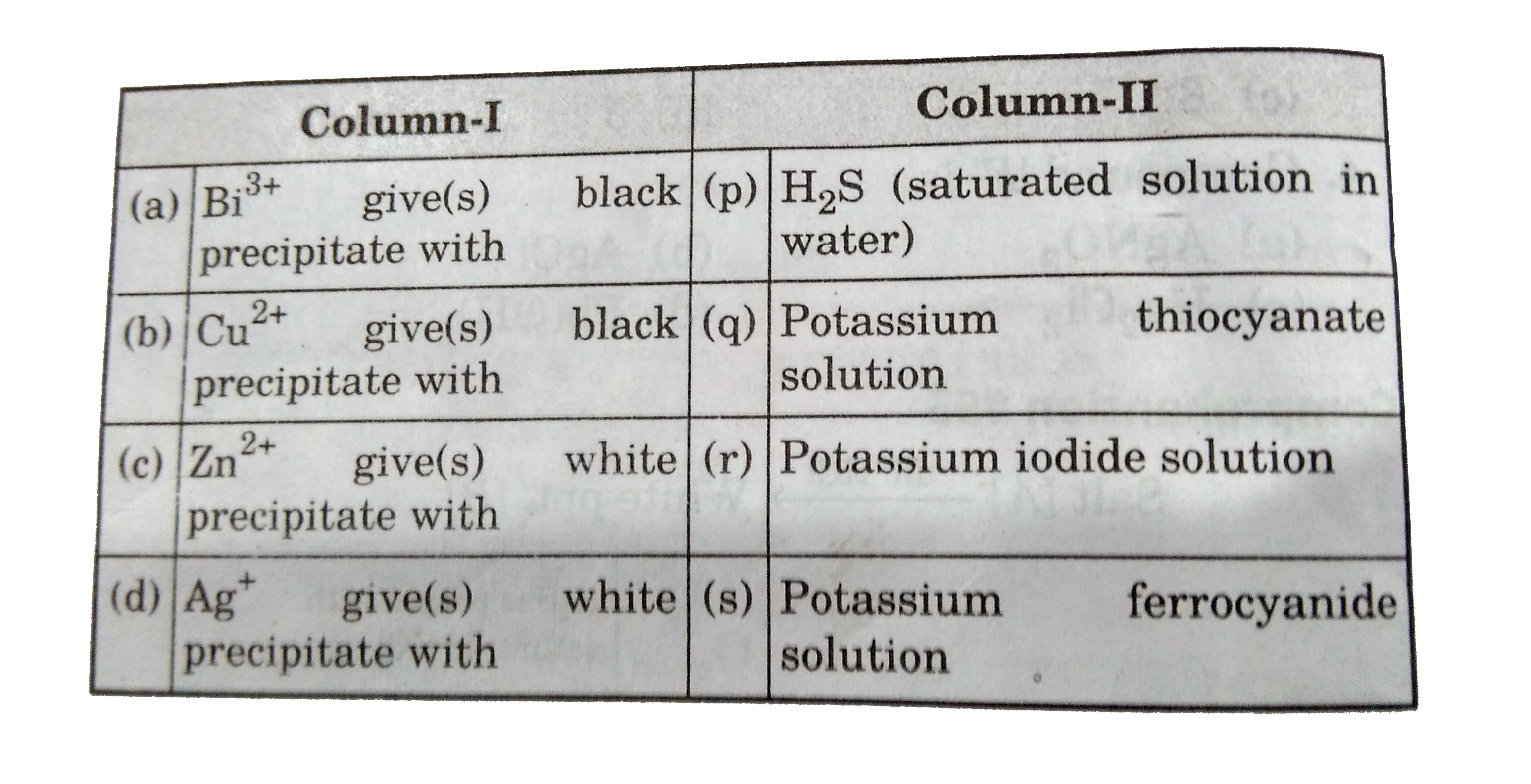Column - I
(A) Oxidation of 1∘ alcohol in aldehyde

Oxidation of alkyne into acid
Column-II
(P) KMnO4,Δ,overeset(Θ)(OH)
(Q) Collin’s reagent
(R ) Jone’s reagent
(S) PCC
The correct Answer is:(A)-Q,R,S;(B)-S;(C )-Q;(D)-P
Topper's Solved these Questions
- ALCOHOLS & ETHERSBOOK - MOTIONCHAPTER - ALCOHOLS & ETHERSEXERCISE - EXERCISE -3 OBJECTIVE PROBLEMS JEE ADVANCED
17 Videos
- ALCOHOLS & ETHERSBOOK - MOTIONCHAPTER - ALCOHOLS & ETHERSEXERCISE - EXERCISE -4 (LEVEL -I) PREVIOUS YEAR JEE MAIN
12 Videos
- ALCOHOLS & ETHERSBOOK - MOTIONCHAPTER - ALCOHOLS & ETHERSEXERCISE - EXERCISE -2 (LEVEL -I) OBJECTIVE PROBLEMS JEE MAIN
38 Videos
- ALKYI HALIDEBOOK - MOTIONCHAPTER - ALKYI HALIDEEXERCISE - Exercise - 4 | Level-II
8 Videos
Similar Questions
The oxidation of which of the following compounds with KMnO4,ΘOH/Δ followed by treatement of acid will give benzoic acid ?
View SolutionColumn- I
(A) Identification of 1∘,2∘and3∘ alcohol
(B) Identification of 1∘,2∘and3∘ Nitroalkane
(C) Formation of alcohol by anti-Markownikoff’s addition
(D) Formation of alcohol by Markownikoff’s addition
Column-II
(P) Oxymercuration demercuration react
(Q) ∝/300∘C,Δ
(R) Victor Meyer test
(S) Hydroboration oxidation
(T) Lucas test
View Solution
Knowledge Check
Which of the following compound will not give benzoic acid on oxidation with KMnO4/ΘOH/Δ:
AC6H5−CH3BC6H5−CH3| C | CH3−CH3C DC6H5−CH2−COOH
DC6H5−CH2−COOHRead the passage given below and answer the following questions:
Aldehydes, ketones and carboxylic acids are few of the major classes of organic compounds containing carbonyl group. Aldehydes are prepared by dehydrogenation or controlled oxidation of primary alcohols and controlled or selective reduction of acyl halides. Ketones are prepared by oxidation of secondary alcohols and hydration of alkynes. Carboxylic acids are prepared by the oxidation of primary alcohols, aldehydes and alkenes by hydrolysis of nitriles and by treatment of Grignard reagents with carbon dioxide.
The reagent which does not react with both, acetone and benzaldehyde.ASodium hydrogensulphiteBPhenyl hydrazineCFehlings' solutionDGrignard reagentS-I: In baeyer's oxidation of ethene sp2 carbon is changed to sp3 carbon.
S-II: Cold dil. Alk. KMnO4 is baeyer's reagent.AS-I & II are correct, S-II is correct explanation of S-IBS-I&II are correct, S-II is not correct explanation of S-ICS-I is true, but S-II is false.DS-I is false, ut S-II is true
Match the colour of ppt. listed in column-I with the reagent(s) is column-II.

View SolutionColumn–I and Column–II contain data on Schrondinger Wave–Mechanical model, where symbols have their usual meanings. Match the columns.
Column-I

(C ) ψ(θ,ϕ)=K (independent of θ&ϕ)
(D) atleast one angular node is present
Column-II
(P)4s(Q)5px(R)3s(S)6dxy
View SolutionSalts given in column-I reacts with the excess of reagents given in column-II and form white/coloured precipitates. Select the correct options for the salts given in column-I with the reagent(s) given in the column-II.

View SolutionMatch the colour of the precipitates listed in column-I with the suitable reagent(s) in column-II.

View SolutionMatch the enteries of column I with appropriate entries of column II Each entry in column I may have one or more than one correct option from column II .
Column I Column II (A)Magnesium (p)p−Block (B)Aluminium (q) Metal (c)Arsenic (r) s- Block (D)Iodine (s) Metalloid
View Solution
